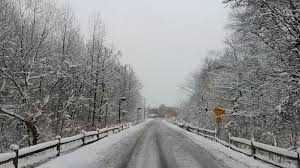A comprehensive new study by Junk Car Medics has revealed concerning statistics about New Jersey’s winter road conditions, placing the Garden State in an unenviable second position nationwide for worst winter roads. The investigation found that a staggering 45.69% of New Jersey’s roads are deemed “unacceptable” during winter months, raising serious concerns about public safety and infrastructure maintenance.
The Critical State of New Jersey’s Infrastructure
The study’s findings highlight that over 1,700 miles of New Jersey’s streets and highways are in poor condition, creating hazardous situations during winter weather. This deteriorating infrastructure poses significant challenges for the state’s 9.3 million residents, particularly during the harsh winter months when road conditions become increasingly treacherous.
The situation becomes even more concerning when considering New Jersey’s strategic location between two major metropolitan areas – New York City and Philadelphia. As a crucial transit corridor, the state’s compromised road conditions affect not just local commuters but also impact regional commerce and interstate transportation.
Winter Weather Challenges and Safety Implications
New Jersey’s winter weather patterns typically include frequent snowstorms, freezing rain, and fluctuating temperatures that create particularly challenging driving conditions. When these natural weather challenges combine with poor road infrastructure, the safety risks multiply significantly. Common winter-related road hazards include:
- Black ice formation in poorly maintained road sections
- Expanding potholes due to freeze-thaw cycles
- Deteriorating road shoulders that limit emergency maneuverability
- Compromised drainage systems leading to dangerous water accumulation
- Uneven pavement surfaces that become particularly hazardous when covered in snow
Economic and Social Impact
The poor winter road conditions have far-reaching consequences beyond immediate safety concerns. Local businesses face increased transportation costs and delivery delays, while everyday commuters must contend with:
- Higher vehicle maintenance expenses due to road-related damage
- Extended commute times and reduced productivity
- Increased fuel consumption due to traffic congestion and detours
- Rising insurance premiums linked to higher accident rates
- Additional wear and tear on vehicles from navigating damaged roads
Emergency Services and Public Safety Concerns
One of the most critical impacts of poor winter road conditions is the potential delay in emergency response times. First responders face significant challenges when navigating deteriorated roads during winter weather events, potentially compromising their ability to provide timely assistance during critical situations.
Broader Infrastructure Rankings
Adding to the winter road concerns, New Jersey’s overall infrastructure situation shows systemic problems. The state ranks third worst nationally for general road conditions throughout the year, indicating that the winter challenges are part of a larger infrastructure crisis requiring immediate attention.
Comparative Analysis with Neighboring States
When compared to neighboring states, New Jersey’s situation appears particularly dire:
- Pennsylvania ranks 11th worst for overall road conditions
- New York places 14th in the national ranking
- Connecticut holds the 6th position for poor road conditions
This regional comparison suggests that while the entire Northeast faces infrastructure challenges, New Jersey’s situation is notably more severe.
Call for Action and Future Implications
The study’s findings underscore the urgent need for comprehensive infrastructure improvement initiatives in New Jersey. Transportation experts recommend:
- Implementing more aggressive preventive maintenance programs
- Investing in modern road construction technologies designed for harsh winter conditions
- Developing better drainage systems to prevent water accumulation and ice formation
- Establishing more efficient snow removal and de-icing protocols
- Creating dedicated funding streams for continuous infrastructure maintenance
Community Impact and Public Response
Local residents and business owners have expressed growing frustration with the deteriorating road conditions. The situation has led to increased public discourse about infrastructure funding priorities and the need for more effective winter maintenance strategies. Community leaders are calling for:
- Greater transparency in road maintenance budgeting
- Improved communication about winter road conditions and maintenance schedules
- Enhanced coordination between state and local maintenance efforts
- More public input in infrastructure improvement planning
Looking forward, addressing these infrastructure challenges will require significant investment and long-term planning. As winter weather patterns become more unpredictable due to climate change, the need for resilient road infrastructure becomes increasingly critical for New Jersey’s future development and public safety.
Disclaimer – Our editorial team has thoroughly fact-checked this article to ensure its accuracy and eliminate any potential misinformation. We are dedicated to upholding the highest standards of integrity in our content.





More Stories
Nightmare on NJ Streets: How America’s 2nd Worst Winter Roads Are Costing You Thousands in Hidden Expenses
Nightmare on NJ Streets: How America’s 2nd Worst Winter Roads Are Costing You Thousands in Hidden Expenses
Nightmare on NJ Streets: How America’s 2nd Worst Winter Roads Are Costing You Thousands in Hidden Expenses